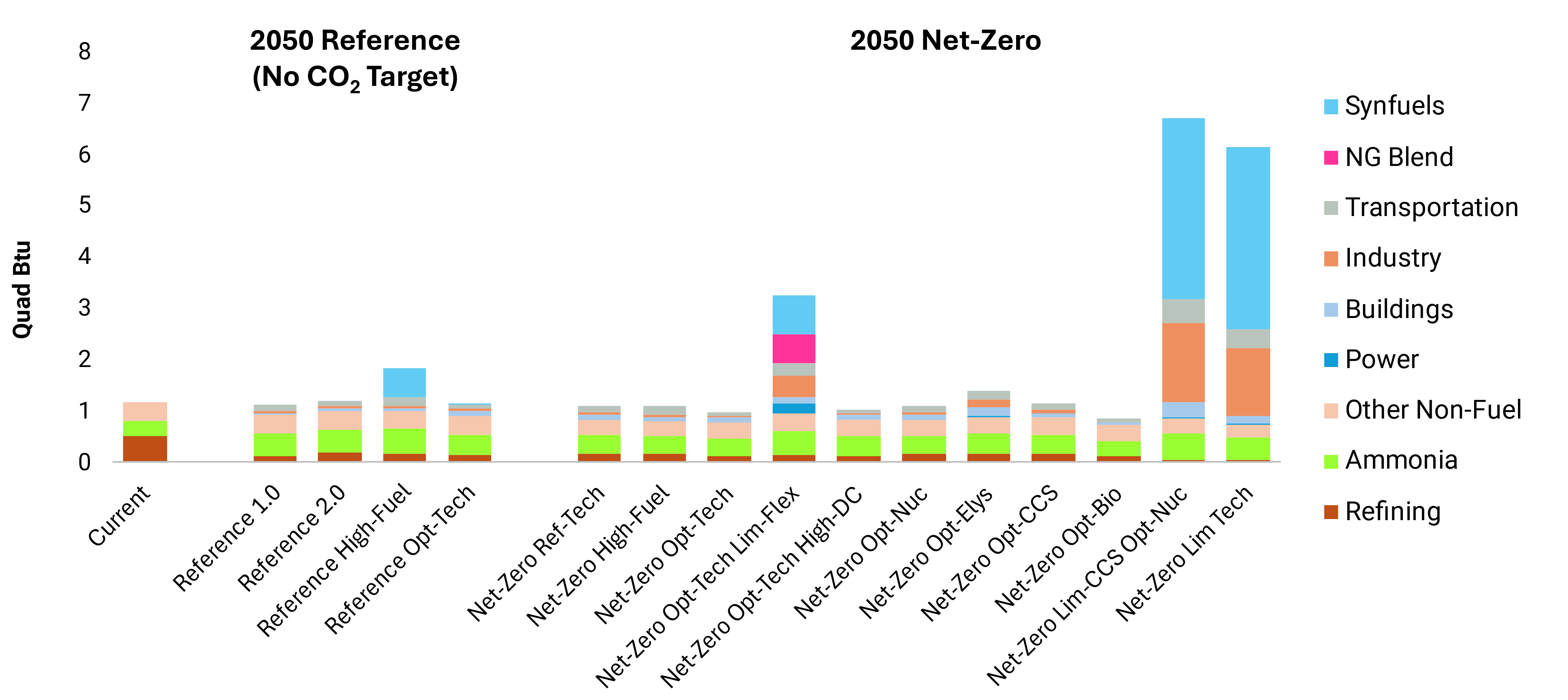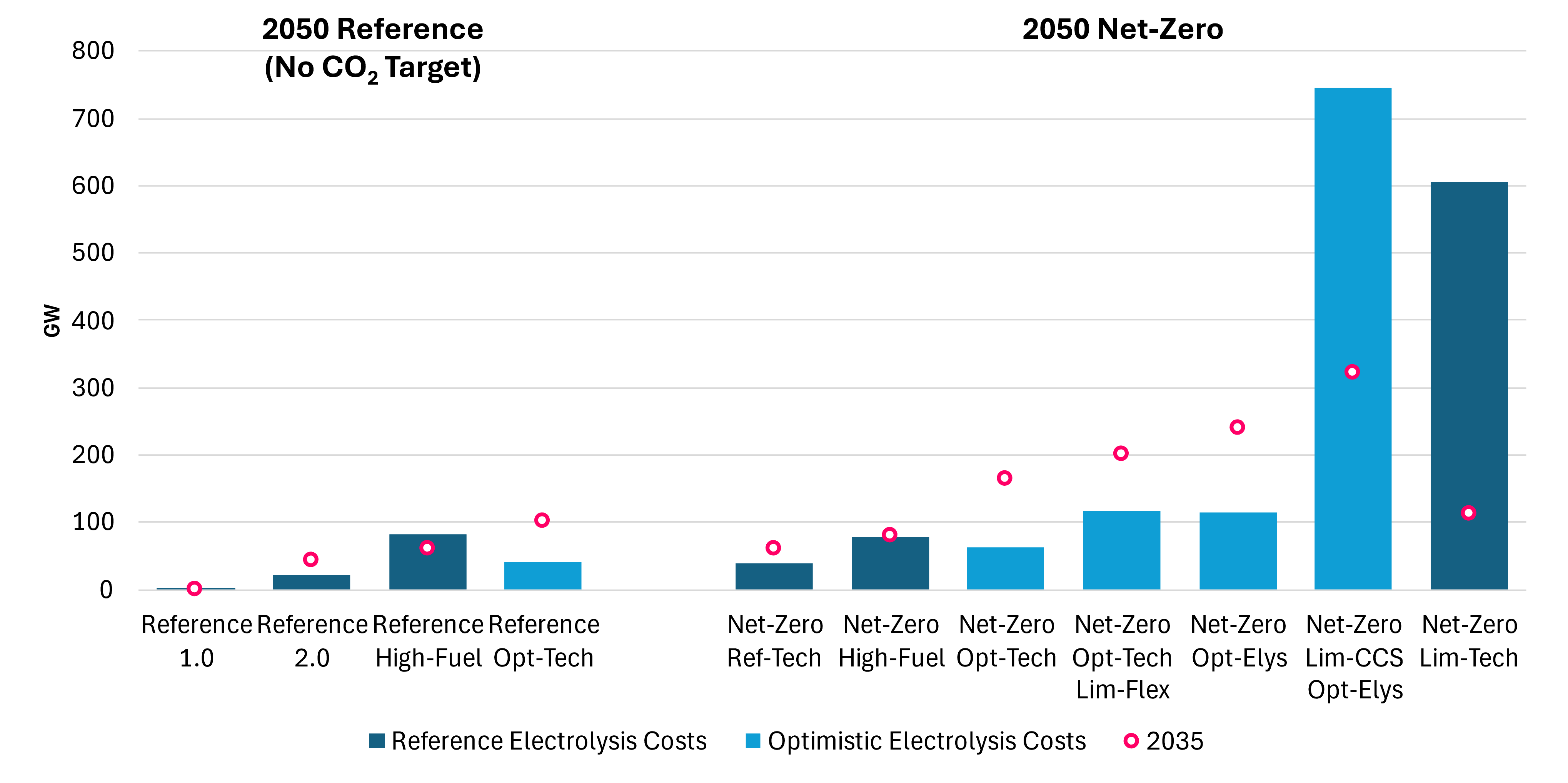Hydrogen
Hydrogen Demand

Hydrogen’s current role as a non-energy product used in the refining and chemical sectors remains, although its use in the refining sector declines as petroleum is displaced by electrification of on-road transportation. As shown in Figure 35, demand for hydrogen as a fuel emerges in select scenarios. In a reference scenario with high fuel prices, state decarbonization targets drive deployment of a small amount of synthetic fuels in the aviation sector, with associated hydrogen inputs. While the 45V clean hydrogen production credit in the IRA could drive a temporary increase in hydrogen use for energy during the subsidy period, its deployment in the long-run under a net-zero target depends on several uncertain factors. One is the costs of electrolysis, with optimistic costs leading to some additional use of hydrogen for end-use energy in the industry and transportation sectors. The other is the flexibility of the target. In cases requiring deeper cuts in direct emissions, hydrogen is in much greater demand as an alternative to fossil use, including as a potential blend component of pipeline gas. Its largest demand comes in the scenarios without CCS where it is used as an input to synthetic fuel production.
Electrolysis

The variation in hydrogen demand leads to a wide range of potential deployment of electrolysis. Note that in most scenarios, the majority of hydrogen is supplied through non-electric production methods including steam methane reforming and biomass gasification (often with CCS). However, the 45V clean hydrogen production credit for electrolysis with clean electricity helps spur investment in electrolysis, and electrolytic production is used in some cases to supply non-energy demand for hydrogen. These results are also sensitive to electrolysis costs. Figure 36 shows installed electrolysis capacity in 2050 across scenarios. With reference electrolysis capital costs, electrolysis has more limited deployment in response to 45V incentives, but greater penetration with higher fuel prices. There is significant deployment in net-zero scenario with limited CCS even with reference capital costs. With optimistic costs, more extensive deployment in response to 45V incentives, but also more attrition after subsidy expires, even in net-zero cases (except with higher fuel prices); maximal deployment in case with optimistic nuclear and electrolysis and restrictions on biomass and CCS.